Have you been taking advantage of Performance Max or programmatic SEO? We’ve been getting a lot of questions about which core marketing strategies to pay attention to this year, so we thought we would discuss some of our biggest observations of what’s been working for us and our clients.
One is Performance Max, a Google Ad campaign type. Originally designed to help advertisers maximize their performance across various Google channels, PMax has sparked debates and discussions among marketerse
The other is influencer marketing, and we’ve seen that fewer businesses are engaging in micro-influencer marketing than they should.
So, in this post, we’ll break down these two strategies plus comment on a few other notable strategies worth keeping your eye on with your own marketing approach.
1) Understanding Performance Max in the B2B Sector
Google’s Performance Max is an advertising campaign type provided by Google Ads that uses machine learning technology to optimize ad performance across all of Google’s channels and inventory.
This means it can automatically place ads on platforms like Google Search, YouTube, Google Display Network, Gmail and Google Maps.

However, its effectiveness can vary significantly depending on the nature of the business and its sales cycle, especially in the B2B sector.
For businesses with a long sales cycle and a focus on conversion optimization, Performance Max might not always be the ideal solution. That makes sense, because PMax campaigns put a heavy emphasis on using all of Google’s ad inventory (including shopping ads).
Of course, if your B2B offer is a larger type of deal size or a service, shopping ads likely aren’t a good fit:
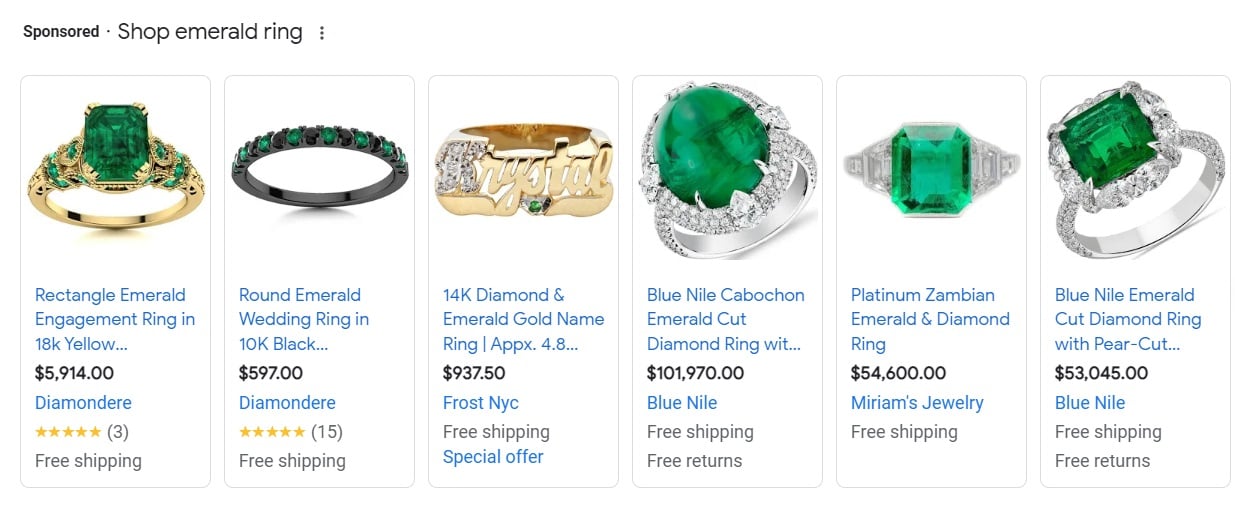
Unfortunately, PMax campaigns don’t give you the ability to opt out of shopping campaign placements. When you use Performance Max (or Facebook’s Advantage+ campaigns), you’re basically surrendering most of your control to the ad hosting platform, giving them practically total control as to where your ad assets are delivered and shown (per some criteria you set in the onset).
As you might imagine, that can make B2B marketing complicated if you’re trying to take advantage of these fully automated ad campaigns. To that end, B2B businesses should consider a more top-funnel approach and ensure that only high-quality leads are passed into the system.
For instance, if a company records five conversions (three of them are good and the other two are crap), only the high-quality ones should be used to train the Performance Max algorithms so that the focus remains on continuing to acquire similarly high-quality leads.

If you’re diligent in controlling the conversion data that is used to inform your automated campaigns, you’ll have a much better chance of getting your PMax campaigns to deliver quality results for your brand.
Related Content: SaaS Lead Generation: How We Improved Axure’s Lead Quality Overnight
2) The Role of Influencer Marketing
Moving beyond traditional advertising channels, influencer marketing has proven to be an exceptionally effective digital marketing strategy, especially when leveraging micro-influencers.
Cadbury is one big company that works with micro-influencers to promote their product and gain new customers:

These influencers typically engage a dedicated niche audience and can drive more targeted and engaged traffic compared to their macro counterparts. Although increased traffic does not always correlate with increased revenue, the targeted approach of micro-influencers often leads to better conversion rates and a healthier bottom line.
These are some of the leading reasons we’re leaning more toward leveraging micro-influencers (and are encouraging our clients to, as well):
- Higher Engagement Rates: Micro-influencers often boast higher engagement rates than larger influencers due to their more personal connections with their audience.
- Cost-Effectiveness: Collaborating with micro-influencers is usually more cost-effective, allowing for more diversified marketing campaigns.
- Increased Trust: Audiences tend to trust micro-influencers more as their endorsements and content appear more genuine and relatable.
- Targeted Audiences: Micro-influencers typically have very specific niches, making it easier for brands to reach their ideal customers with precision.
3) The Importance of Multi-Platform Presence and Content Quality
In a day and age where the average person is on an average of 6.6 social networks, sticking to one or two platforms for marketing is no longer sufficient:
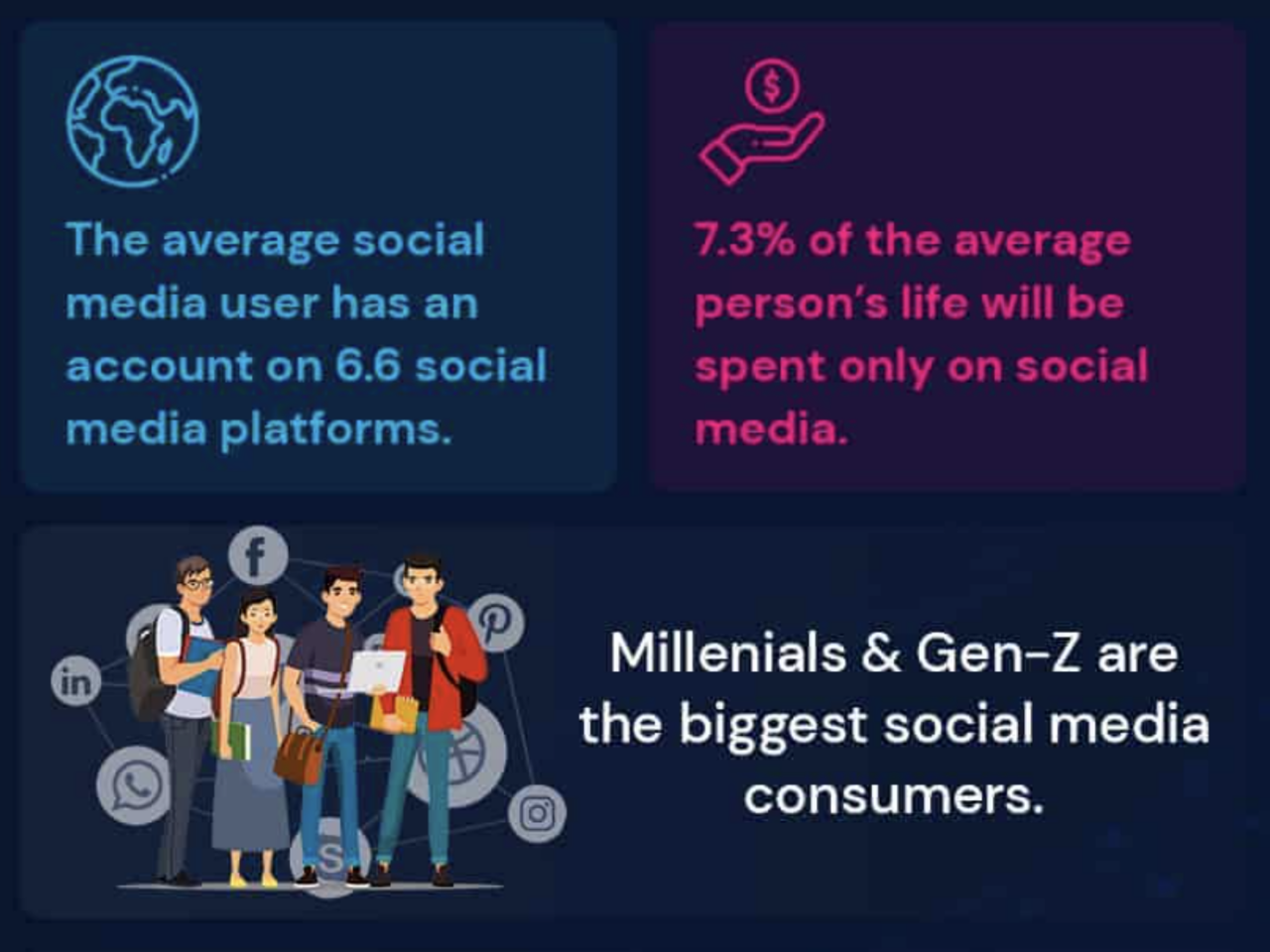
Diversifying across multiple platforms allows a business to cast a wider net and engage with audiences where they spend the most time. However, the strategy should be adapted to each platform while maintaining a consistent brand message across all channels (aka omnichannel marketing):
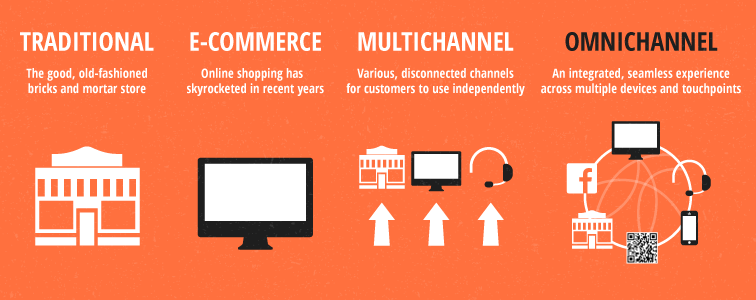
It’s also a common misconception that merely outspending competitors in advertising can guarantee market dominance. But that’s not the case. Spending your marketing dollars effectively, which largely relies on a firm foundation of quality content to support marketing purchases, is better.
With billions of pieces of content published daily, merely creating content is no longer enough. The content has to be compelling, well-researched and provide actual value to stand out. High-quality content significantly impacts site rankings and user engagement:
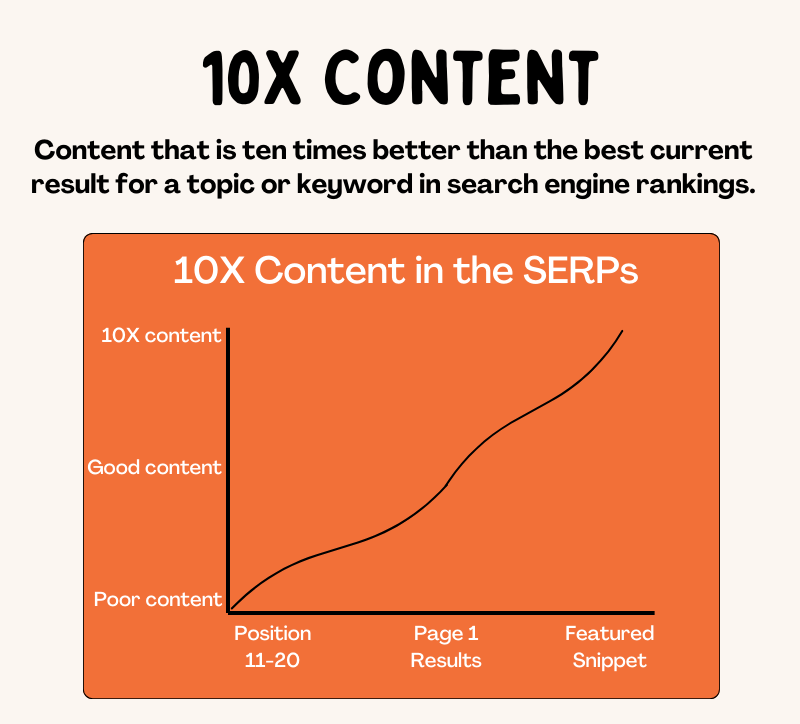
After all, building a brand and developing a loyal customer base takes time, strategic insight and, most importantly, content that resonates with the target audience.
So invest in your content’s quality. It’s the backbone of any marketing strategy, no matter what medium or placement. It all comes down to personifying your brand in your content and then leveraging that for performance only after the content quality is solid.
4) Programmatic SEO and the Imperative of Quality
Another critical aspect of digital marketing is programmatic SEO, which can automate the creation of web pages at scale based on data inputs and templates.
While this can significantly increase a website’s footprint, without a focus on the quality of content, such strategies risk leading to penalties, like de-indexing by search engines. Making sure you’re creating quality content and having a human in the loop in content creation processes are essential to avoid such pitfalls.
PSEO leverages algorithms to generate large volumes of web pages automatically, which can be particularly useful for e-commerce sites with many products or businesses with extensive service offerings across various locations.
However, this automation carries inherent risks if not closely managed, such as:
- Quality Control Challenges: Automatically generated content can often result in repetitive, low-quality pages that provide little value to users. Search engines like Google prioritize high-quality, unique content and are equipped with algorithms designed to penalize poor content.
- Risk of Penalties: If search engines detect that a site is generating pages en masse without adherence to quality guidelines, the site can suffer severe penalties, including reduced rankings or even complete removal from search results.
- Brand Reputation Damage: Poor-quality content can damage a brand’s reputation. Potential customers encountering badly written or irrelevant pages might associate these negative experiences with the brand, reducing trust.
To mitigate these risks, you should implement extremely thorough quality control mechanisms like the following:
- Regular audits of automatically generated content.
- Making sure that each page provides unique value and adheres to SEO best practices.
- Keeping a human in the loop, especially in the initial stages of programmatic SEO implementation, to oversee and refine content output.
Read our case study Our pSEO Playbook: How to Get Started with Programmatic SEO to learn how we achieved this success (without getting penalized):

Recapping Effective Digital Marketing Strategies
Here’s a quick-look comparison chart for the marketing strategies that we discussed in this post.
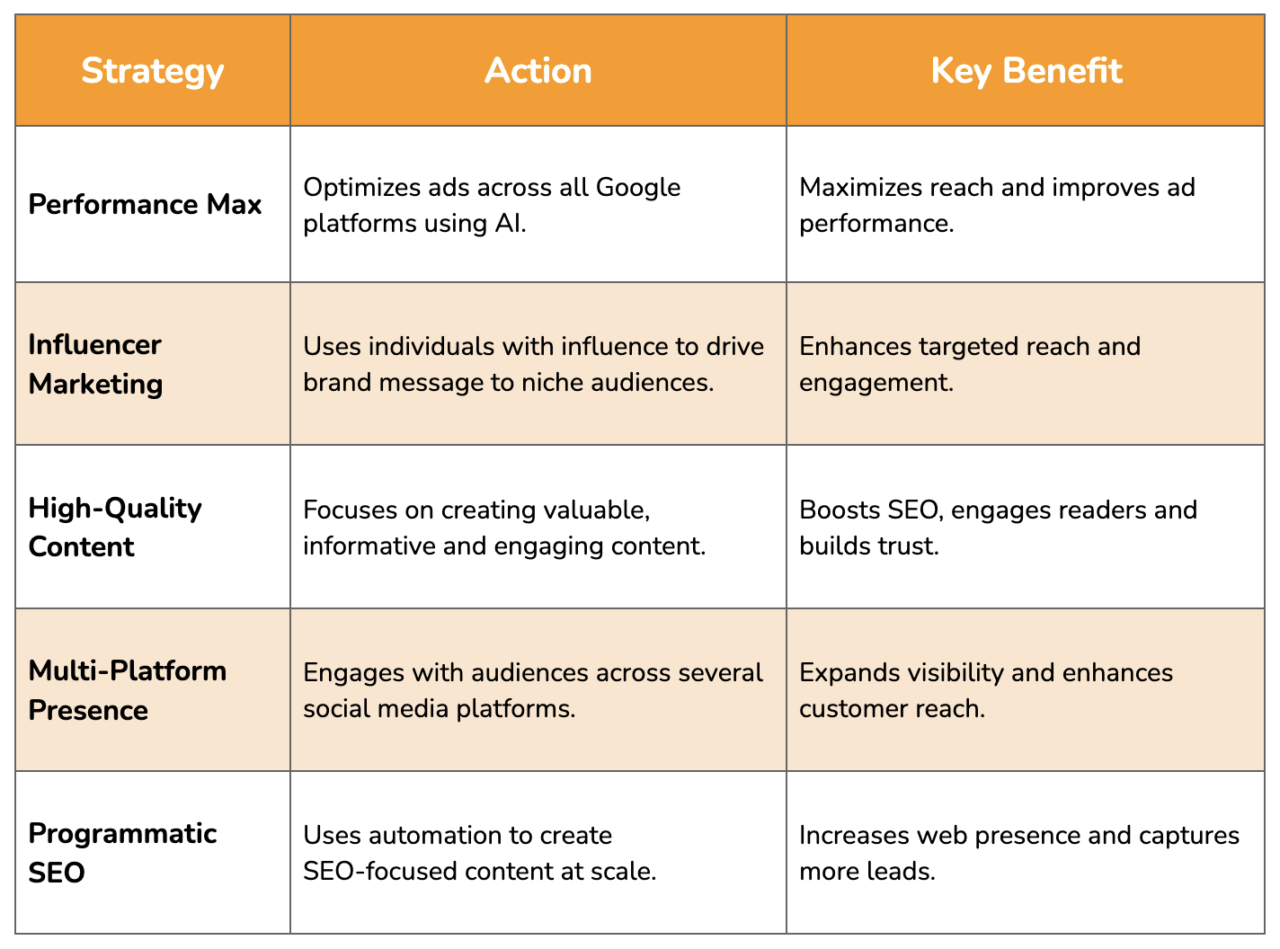
Closing Comments on Top Marketing Strategies We’ve Been Using
While Performance Max is a potent tool in the arsenal of digital marketing, its effectiveness is contingent on how well it is compatible with your business model, and even then it must be dealt with cautiously.
As for micro-influencer marketing, we’re encouraging more brands to try more of the smaller players on social media instead of going after the bigger influencers.
And supporting all this has to be strong, quality content that can be developed programmatically in order to scale.
If you’re ready to level up your marketing strategy, Single Grain’s digital marketing experts can help!👇
For more insights and lessons about marketing, check out our Marketing School podcast on YouTube.






